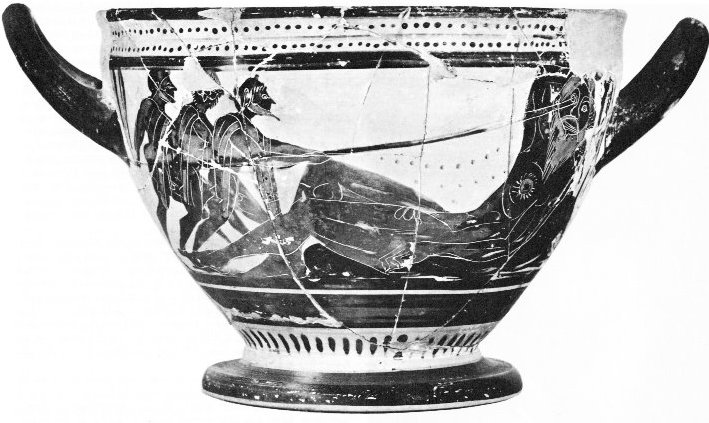 Obviously there is something special with 2b and 6b. In period no. 2b there is no Sun, in 6b the Sun doesn't 'stand up' - and the central oval is large. That the oval is large should remind us of the Sun at the final of his diurnal course, like a red orange fruit full of juice. And then we should make creative use of the information from Hb5-53 (→ 5 * 53 = 265 → September equinox):
Hb3-11 is 5 days (glyphs) earlier than Hb3-16 at Elnath (*80) and Hb4-11 is 5 days earlier than Hb4-16:
In the Golden Age of the Bull the star Haedus II (η Aurigae) had risen *64 (= *75 - *11) right ascension days later than in my assumed era for the rongorongo texts, when 0h had been at March 21 (80) where the Sun would rise heliacally together with Sirrah (α Andromedae), and when 11 days later - in April 1 (91) - the Sun would be together with η Andromedae:
The glyph number for Hb3-11 as counted from the beginning of side b of the H tablet is 111 = 100 (number of glyphs carried by the lines Hb1 + Hb2) + 11 (days from 0h to April 1 where according to Hevelius the left elbow of Andromeda would be in touch with the back side of the northern of the pair of fishes in the Pisces contellation).
It would be easy to connect the glyph numbers with the right ascension days in the Golden Age of the Bull if it was as simple as to subtract 100. Here is the origin of my idea to suggest glyph number 141 on side b of the H tablet should be read as *41. ... For instance could day 141 (probably each glyph corresponds to a day) be alluding to the star Bharani (*41.4) in Musca Borealis, because this star was a key for the Arabs (and presumably all following astronomers) ... From η Andromedae (*11.4) to Bharani (*41.4) there were precisely *30.0 right ascension days.
|
|||||||||||||||||||||||||||||||||||||||||||||||||||||||||||||||||||||||||||||||||||||||||||||||||||||||||||||||||||||||||||||||||||||||









